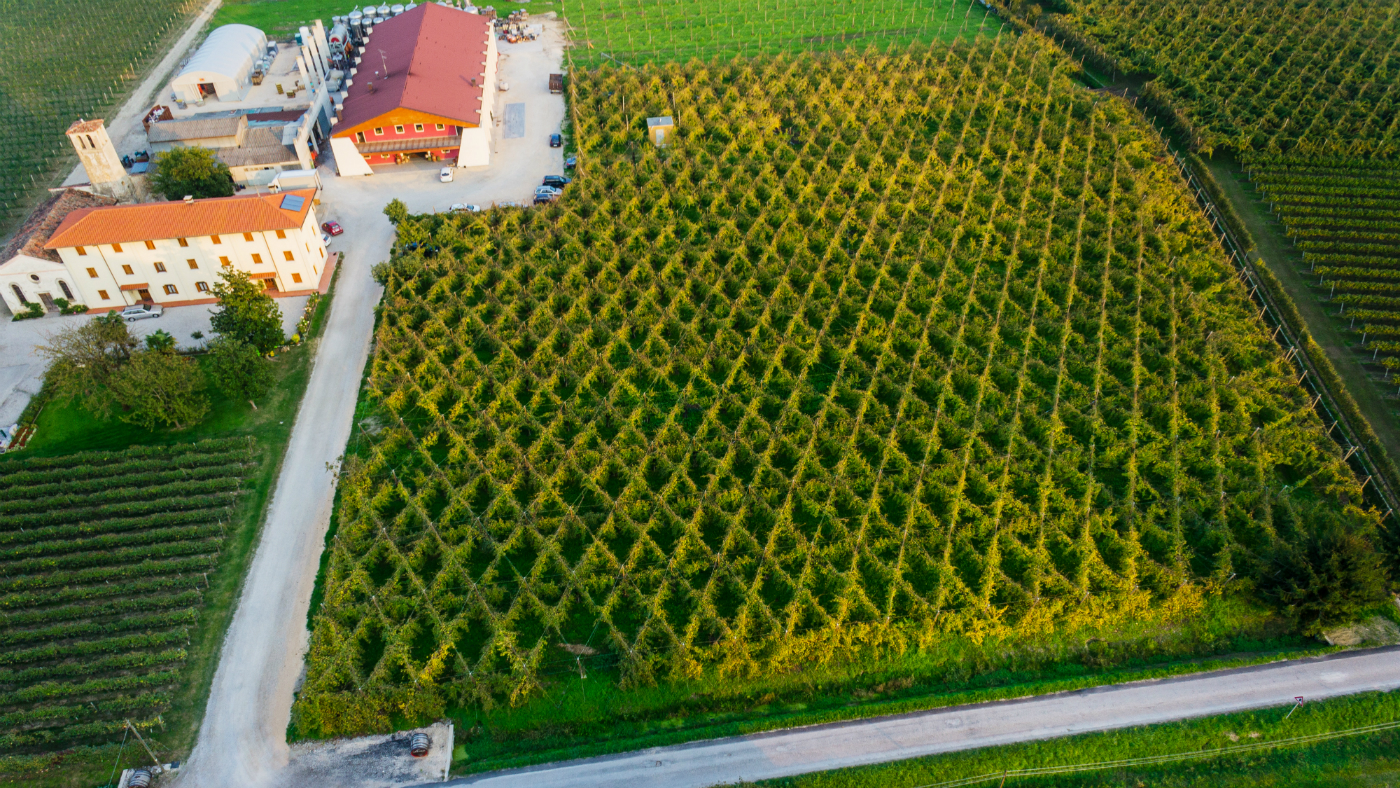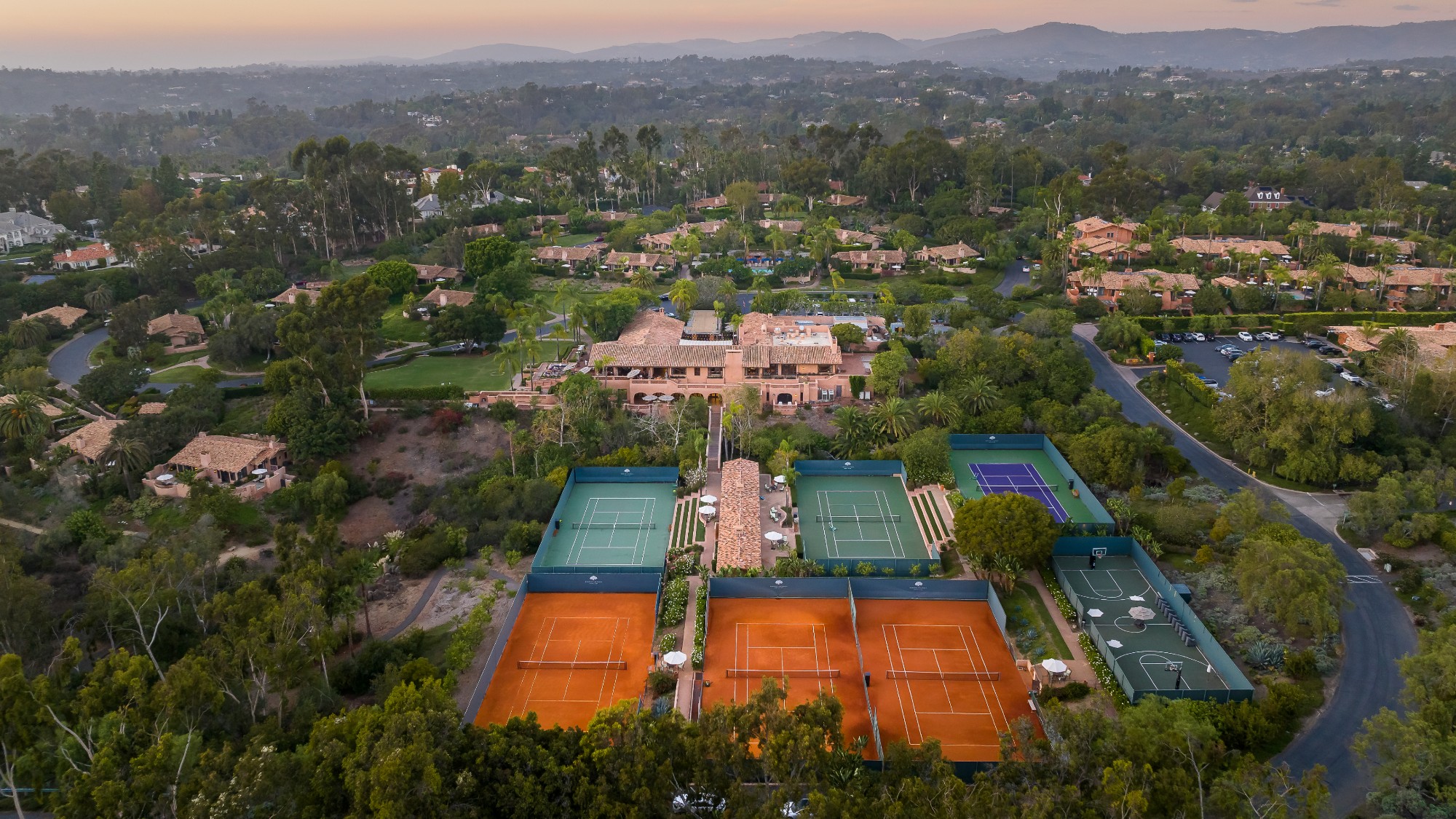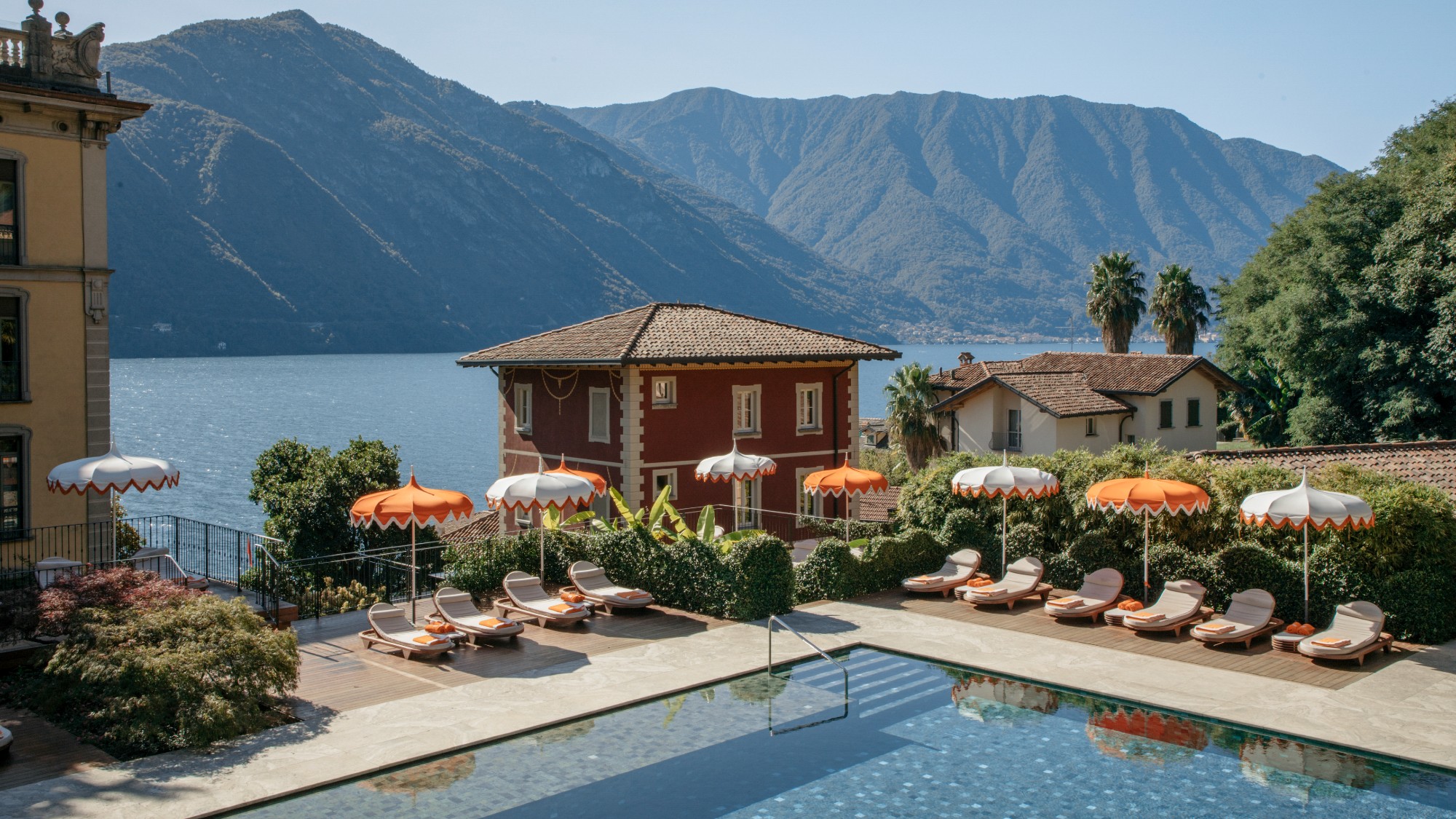Prosecco is dead, long live Prosecco: the re-sophistication of Italy’s sparkling wine

Tucked between the formidable fingers of the Dolomites and the enduring opulence of Venice is an overlooked area of Italian countryside. Its steep verdant hills and serene cobble-stone towns won’t be found on any tourist maps – but you will find their handiwork on just about every menu in the UK.
This is Prosecco country: the land that gave us all-you-can-sip sparkle. It’s easy to forget between the 6th and 7th bottomless brunch glass that someone, somewhere actually crafted this world-conquering wine. But craft it they do – carefully, consistently and often quickly – and what the UK sees is a mere price-prioritised glimpse of Prosecco’s true scope.
Nearly all the Prosecco we drink in the UK is traditional Extra Dry Spumante (sparkling). It’s a drink, I hesitate to admit, that I’ve grown a little tired of – it’s a touch too sweet despite its name and usually imbibed in such quantities as to render it, or me, quite sickly.
The Week
Escape your echo chamber. Get the facts behind the news, plus analysis from multiple perspectives.

Sign up for The Week's Free Newsletters
From our morning news briefing to a weekly Good News Newsletter, get the best of The Week delivered directly to your inbox.
From our morning news briefing to a weekly Good News Newsletter, get the best of The Week delivered directly to your inbox.

It never occurred to me that Prosecco, like all other wines, might have other options. Extra Dry Spumante only accounts for 63% of yearly Prosecco production. That leaves a large and very interesting chunk unaccounted for, which differs by sugar content, fizziness and fermentation. Most of these are sparkling varieties: there’s Brut, a drier less sweet version, which is slowly making gains in the international market, and small outliers Extra Brut and syrupy-sweet Dry that have yet to make waves outside of Italy.
While Spumante is undoubtedly the frontrunner, we overlook three minor players in the Prosecco game, much to our detriment. Frizzante, a gentler semi-sparkling, was actually the original version of Prosecco and accounts for 17.45% of production. It comes in two types depending on the fermentation process. In traditional Frizzante, the all-important second fermentation happens in tanks, but in the rare Rifermantato in Bottiglia version, the yeast is left in the wine and fermentation occurs inside the bottle. Finally, the least produced and most improbable Prosecco is called Tranquillo – it’s entirely still.

You can find all of these along The Prosecco Route in Conegliano Valdobbiadene, where locals have been growing Glera grapes – those used in Prosecco – for centuries. The region has long been at the heart of Italian wine-making, but in 2009 it was given Italy’s new and highest classification of DOCG – a Denomination of Controlled and Guaranteed Origin.
The acclaimed DOCG rating restricts naming rights to regional growers; a sparkling wine made in the same way elsewhere cannot be called Prosecco. The rating protects and empowers those living and working under it, while the ratings themselves are protected and controlled by the Prosecco Consortium based in Treviso.
A free daily email with the biggest news stories of the day – and the best features from TheWeek.com
Given Prosecco’s unabated popularity, it’s a full time job. Even Champagne-stubborn France is beginning to see the value of this Italian bubbly, but the UK still remains the number one market. We drink 34.9% of all Prosecco production – more even than the Italians’ 25%. Valdo is one of the more recognisable brands in Britain, stocked in Waitrose and Sainsburys. Based at the northernmost reaches of the route in Valdobbiadene, this award-winning historic winery is trying prove Prosecco is not just an aperitif but a perfect food pairing too.

At their understated terracotta-coloured headquarters, Valdo serves Prosecco with a platter of cheeses, breads and cured meats. Two of their wines play particularly well with the platter: the Organic Bio Brut and the Millesimato – a highly prized Prosecco made from a single grape harvest. Despite being fermented for four months, the Millesimato is surprisingly light, full of citrus and is perfect for starters and fish. The Brut’s pear, jasmine and soft mineral notes straight from the rich clay soil outside make it a convincing meal-time tipple.
Even so, neither solve the problem of the bubbles, which always fill me up faster than the food. Luckily the answer to this conundrum lies a short drive on from Valdobbiadene, in the most unassuming of roadside restaurants. Osteria Al Castelletto serves hearty Italian fare and the rarest of Proseccos – Tranquillo and Rifermentato in Bottiglia.
The Tranquillo is first up and quickly takes the top spot. It is fresh, elegant with a touch of tang and sweet. Its only drawback is that it won’t be coming to the UK anytime soon.
“Its a very, very tiny production,” the consortium’s Tanja Barattin points out. “0.05% of the total. Its mainly produced in Treviso and mainly consumed in Treviso.”
I can see why the Italians keep it to themselves. Visions of stashing bottles of it in my baggage are put on hold, however, as the next Prosecco is uncorked and Tranquillo is quickly swept aside.

Rifermentato in Bottiglia is absolutely sensational. The welcoming waft of yeast rises from the open bottle that’s been left unshaken by our server. Yeast settles in the neck rather than at the bottom, so the first glass is the richest and ripest pour if unshaken. It is unlike any wine I’ve had: where Extra Dry Spumante conjures clinking flutes, Eggs Benedict and a heavy-handed use of rose gold, Rifermentato is a totally different, beautiful beast.
Cloudy, creamy with a nose of fresh morning bread, there’s a wonderful savoury, sour funk to it, balanced out by light Frizzante bubbles. It’s infinitely drinkable and is painful to have to pass on and share that first glass around. For me, this is undoubtedly the best the region has to offer. Sadly it is very hard to get in Britain. If you’re lucky, you might find a bottle in a smattering of London restaurants, usually under its other more pronounceable name Col Fondo.
Thankfully there are other wines coming to refresh the British market. Just outside Conegliano, the modern Astoria winery has crafted a new member of the Prosecco family that will be available to Brits soon: Rosé Prosecco. It was guaranteed to be a showstopper on UK shores regardless of the actual taste, but its fantastic strawberry nose and clean finish earns its place on the menu. As Rosé is new, the DOCG has yet to catch up with its creation, but Astoria hopes it will be officially recognised and on the shelves by Spring 2021.
Given the market’s majority female demographic, Rosé Prosecco was inevitable, but it’s not the only demand they’re making. Sustainability and organic eco-friendly farming are starting to gain ground in the Prosecco market, with two wineries on our route leading the way: Ca’ Di Rajo and La Jara.

These two represent the old and the new in eco-friendly Prosecco. Family-run Ca’ Di Rajo sustainably cultivates its 40 to 100-year-old vines in the original Bellussera method – the vines grow together in a canopy that can only be harvested by hand. Many of the processes involved are still done manually too, reducing their use of farm vehicles and carbon emissions.
It’s not actually Ca’ Di Rajo’s Prosecco – palatable as it is – that steals the show but their Raboso, a red wine particular to this region. This is a phenomenally rich, full-bodied brute of a grape; their Sangue del Diavolo is great but the smoky Notti di Luna Piena is out-of-this-world good. If you’re visiting the area and don’t like Prosecco, you could happily travel here just for a bottle of this.
Down the road is La Jara, an organic vegan winery that relies on a host of techniques to produce organic Prosecco, from primitive gravel and rose bushes to state-of-the-art fermentation tanks. No unnatural fertilisers or insecticides touch the plants and the winery even has a border to protect its vines from other wineries’ chemical run-off. As La Jara doesn’t use preservatives, everything must be done quickly lest grapes start fermenting under the strong Italian sun. Their Frizzante is corked by hand, with seven or eight workers tying string around 15,000 bottles a day.

What this painstaking production line creates is the best Spumante and classic Frizzante so far. This is partly because La Jara’s wines are drier than most on the market, which their export manager Francesco Galardi puts down to simply knowing their grapes and fermentation.
“We know that we have a base wine that has the quality. We don’t need to cover anything of the wine with sugar.”
While all their Proseccos are exceptional, it’s their Brut that blows everyone away. It recaptures a tantalising hint of the yeast I so loved from the Rifermentato in Bottiglia, all sharp apples and sourdough. It’s very hard to taste this delectable sparkle without recalling the rather one-dimensional brunch fizz I’d become bored with back home.
“The UK has the worst example of Prosecco on the market,” Galardi reluctantly admits, “as 90% of the coverage in the UK on Prosecco is about price. But there is a growing understanding of organic and vegan [Prosecco] in UK market.”

There might be growth but it’s hard to know how far his organic vegan wines will go in such a price-powered market. Can La Jara convince all-you-can-drink brunchers and restaurants away from the cheap stuff?
“It’s not so huge to go from £5 to £7. It might be one euro cheaper than my Prosecco, but you can really taste the difference. If you’re buying Prosecco, likelihood is you’ll afford a few pounds extra for something you’ll really enjoy.”
It’s easy to be convinced when you’re sipping their hard-earned efforts, overlooking the rows of pampered vines bathed in autumnal sunlight. There’s no doubt that a Prosecco renaissance is long overdue in the UK. While I wish it were Rifermentato or Tranquillo leading the way, I’ll happily settle for Rosé, Frizzante and this organic Brut instead, especially when the price difference is so minimal.

At the end of the day, Prosecco has never aimed to be a top shelf, special occasion drink. It wants to be a weekday wine like any other, which is why the endless comparisons to Champagne frustrate many of the growers here. As Galardi says, “It’s like comparing a Ferrari to a Fiat. They’re both great, but it’s a completely different wolf.”
Exploring the region, you can feel that difference. Prosecco is very much a local wine gone global, but it’s lost a little in the process. The elegance and character it has here in Italy hasn’t crossed the channel – yet. There’s still time to consign bottom-shelf basics and excessive brunches to the bin and re-sophisticate this remarkable, rural bubbly.
-
 Why is Trump’s alleged strike on Venezuela shrouded in so much secrecy?
Why is Trump’s alleged strike on Venezuela shrouded in so much secrecy?TODAY'S BIG QUESTION Trump’s comments have raised more questions than answers about what his administration is doing in the Southern Hemisphere
-
 Vance’s ‘next move will reveal whether the conservative movement can move past Trump’
Vance’s ‘next move will reveal whether the conservative movement can move past Trump’Instant Opinion Opinion, comment and editorials of the day
-
 Why recognizing Somaliland is so risky for Israel
Why recognizing Somaliland is so risky for IsraelTHE EXPLAINER By wading into one of North Africa’s most fraught political schisms, the Netanyahu government risks further international isolation
-
 The best adventure holidays for adrenaline junkies
The best adventure holidays for adrenaline junkiesThe Week Recommends Five destinations perfect for outdoor thrill-seekers
-
 The best sherries to try this autumn
The best sherries to try this autumnThe Week Recommends The warming tipple from sunny Spain is an underrated cold-weather staple
-
 The rise of English sparkling wine
The rise of English sparkling wineThe Week Recommends As UK-based brands give champagne a run for its money, here’s everything you need to know about choosing the right bottle
-
 8 hotels with ace tennis courts
8 hotels with ace tennis courtsThe Week Recommends Bring your A game
-
 Experience the cool of these 11 stunning pools and lazy rivers this summer
Experience the cool of these 11 stunning pools and lazy rivers this summerThe Week Recommends You'll want to dive right in
-
 One great cookbook: 'Salt to Taste'
One great cookbook: 'Salt to Taste'The Week Recommends Your roadmap to satisfying Italian home cooking
-
 Valle dell'Erica Thalasso & Spa: a tranquil haven in Sardinia
Valle dell'Erica Thalasso & Spa: a tranquil haven in SardiniaThe Week Recommends This family-friendly resort is steps from the sea and boasts a well-equipped kids' club
-
 Rosorange: the chic 'love child' of orange wine and rosé
Rosorange: the chic 'love child' of orange wine and roséThe Week Recommends Peachy to look at and crisp to drink, here's to the wine of the summer